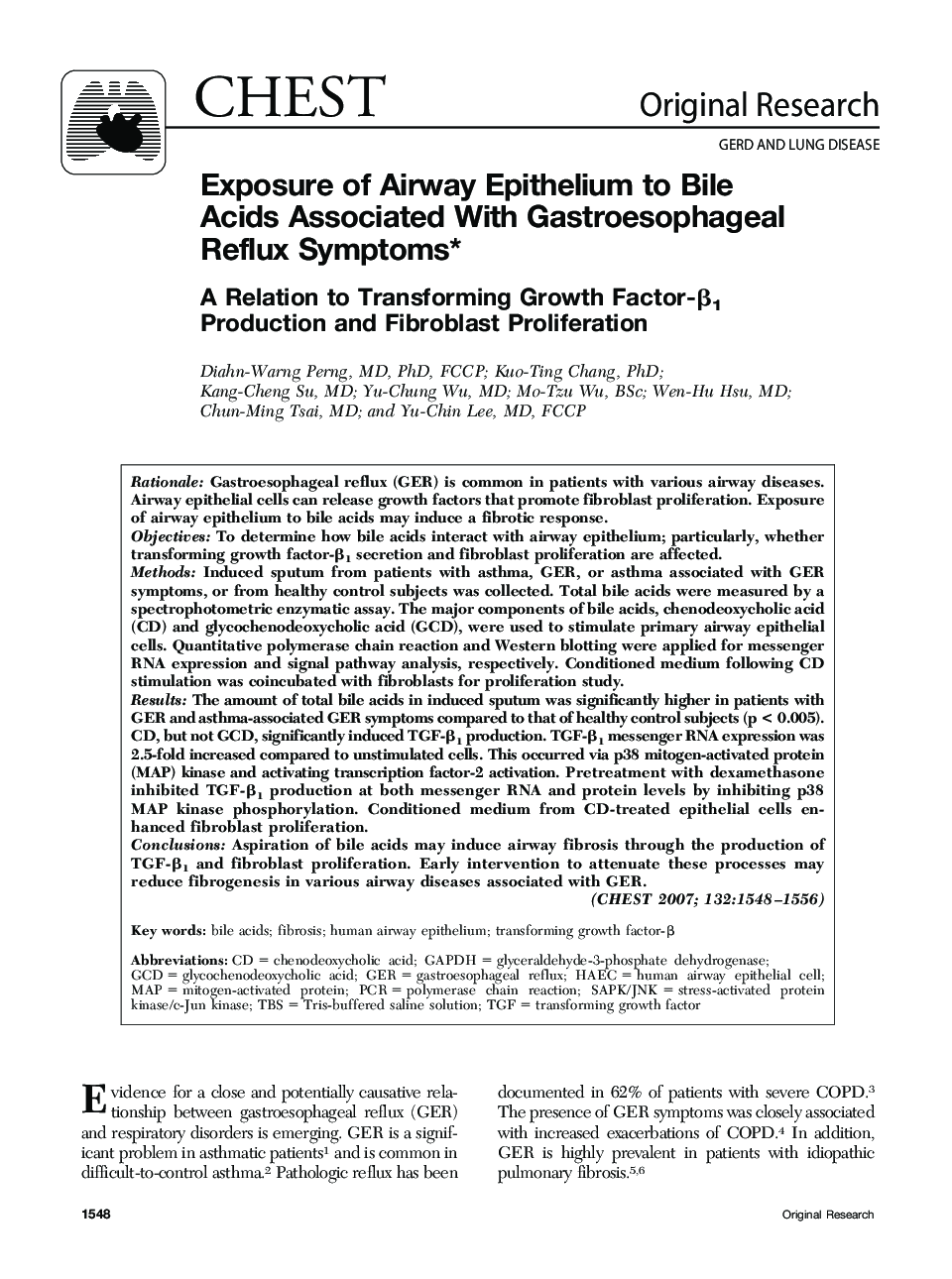| Article ID | Journal | Published Year | Pages | File Type |
|---|---|---|---|---|
| 2904431 | Chest | 2007 | 9 Pages |
RationaleGastroesophageal reflux (GER) is common in patients with various airway diseases. Airway epithelial cells can release growth factors that promote fibroblast proliferation. Exposure of airway epithelium to bile acids may induce a fibrotic response.ObjectivesTo determine how bile acids interact with airway epithelium; particularly, whether transforming growth factor-β1 secretion and fibroblast proliferation are affected.MethodsInduced sputum from patients with asthma, GER, or asthma associated with GER symptoms, or from healthy control subjects was collected. Total bile acids were measured by a spectrophotometric enzymatic assay. The major components of bile acids, chenodeoxycholic acid (CD) and glycochenodeoxycholic acid (GCD), were used to stimulate primary airway epithelial cells. Quantitative polymerase chain reaction and Western blotting were applied for messenger RNA expression and signal pathway analysis, respectively. Conditioned medium following CD stimulation was coincubated with fibroblasts for proliferation study.ResultsThe amount of total bile acids in induced sputum was significantly higher in patients with GER and asthma-associated GER symptoms compared to that of healthy control subjects (p < 0.005). CD, but not GCD, significantly induced TGF-β1 production. TGF-β1 messenger RNA expression was 2.5-fold increased compared to unstimulated cells. This occurred via p38 mitogen-activated protein (MAP) kinase and activating transcription factor-2 activation. Pretreatment with dexamethasone inhibited TGF-β1 production at both messenger RNA and protein levels by inhibiting p38 MAP kinase phosphorylation. Conditioned medium from CD-treated epithelial cells enhanced fibroblast proliferation.ConclusionsAspiration of bile acids may induce airway fibrosis through the production of TGF-β1 and fibroblast proliferation. Early intervention to attenuate these processes may reduce fibrogenesis in various airway diseases associated with GER.
